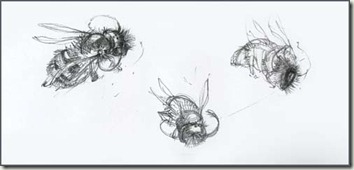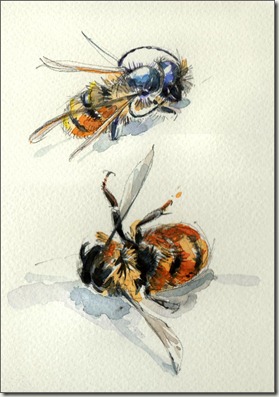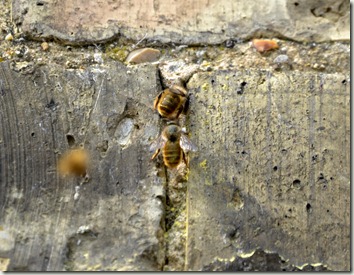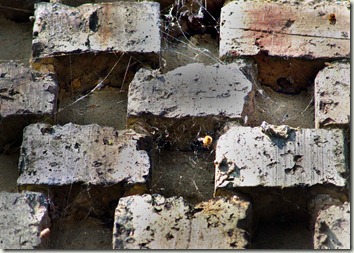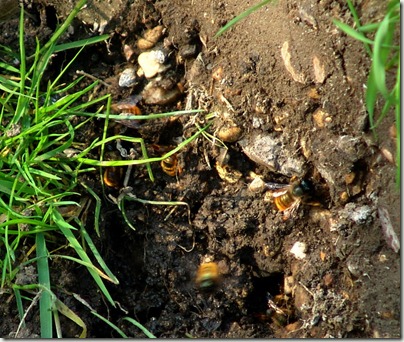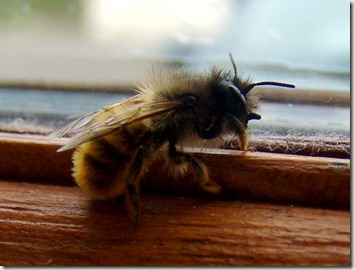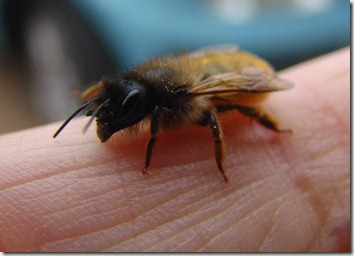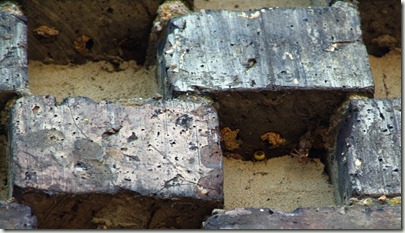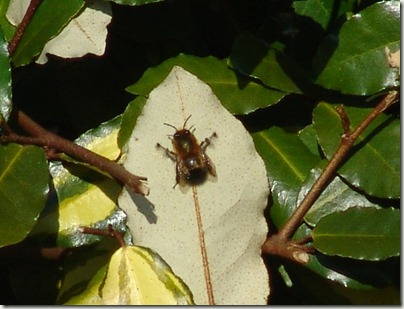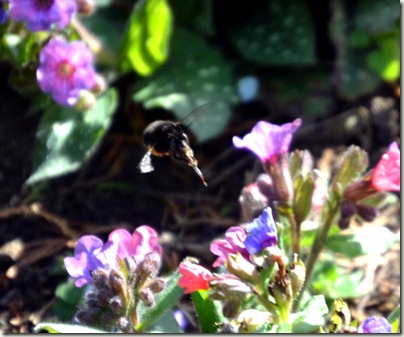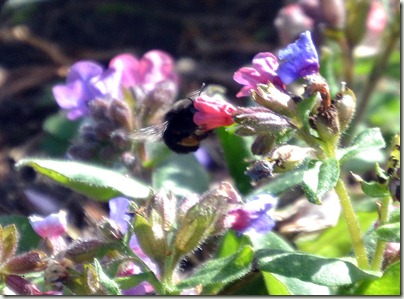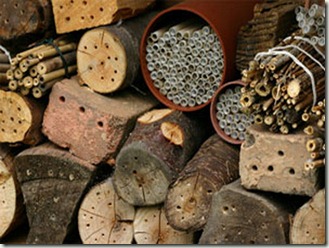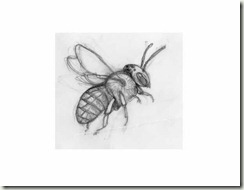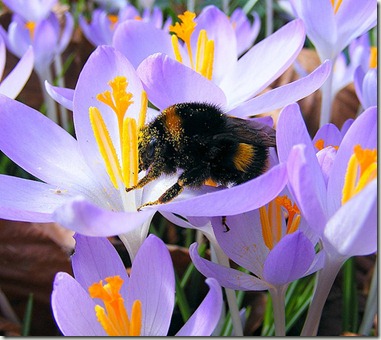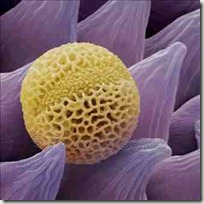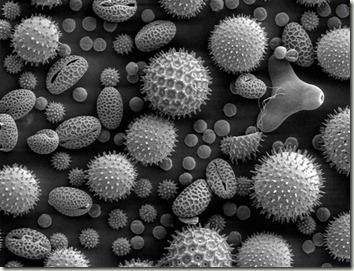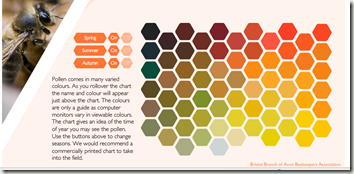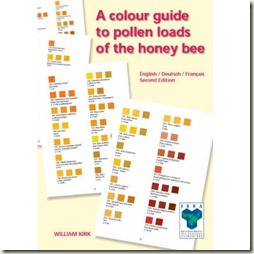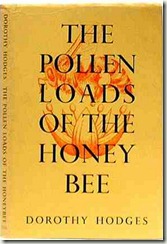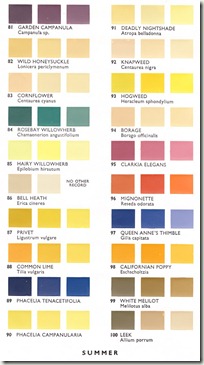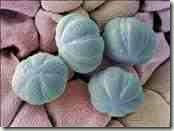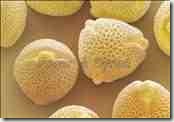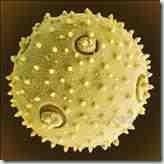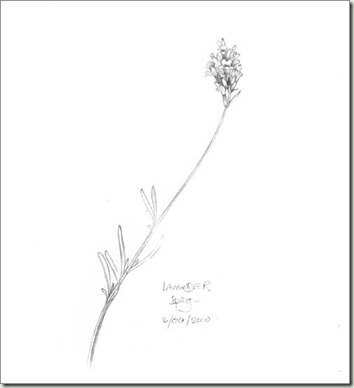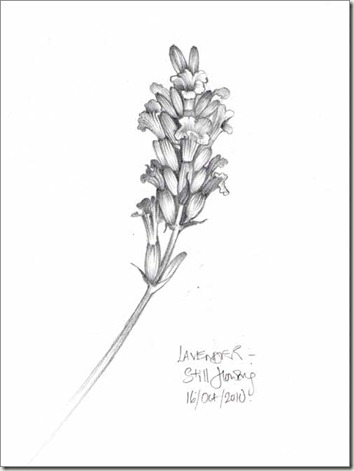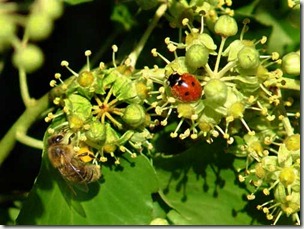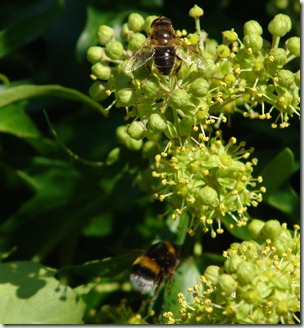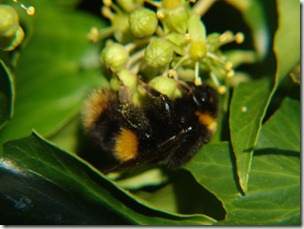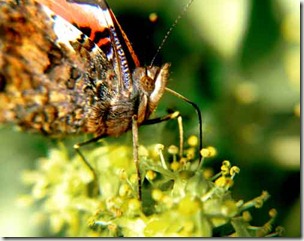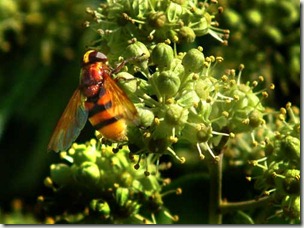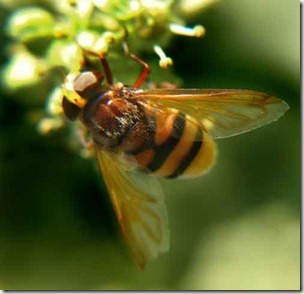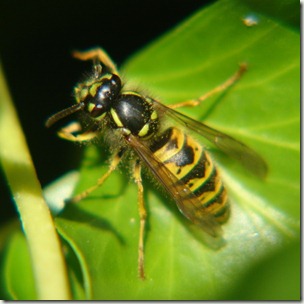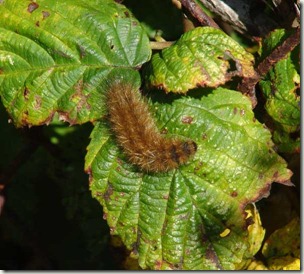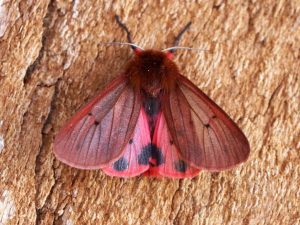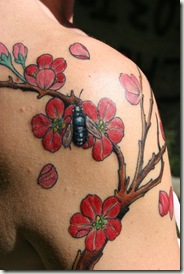It was foggy, damp and very cold when we arrived back in the UK and has not improved yet and after New Orleans things are a little quiet in rural Lincolnshire. But Spring is on its way. It is light at 7 am and for the first time in many years I am seeing the snowdrops and aconites which carpet the garden in February.
I am delighted to see the squirrel has survived the winter and my favourite rooks are still here, sitting hunched and squabbling on the bare branches of the weeping ash or listening to worm music. ( see Rooks post )
No bee sightings yet, any sensible bee would surely be lying doggo in this weather, but I see from the BWARS forum that there have been quite a few early reports.
Apart from honey bees, Buff tailed Bumble Bee (Bombus terrestris) Queens and, newcomer, the pretty Tree Bumble Bee (Bombus hypnorum) which is to be one of my next painting subjects, are out and about.
To cheer us up from lack of sun, here is my friend Jane Adams’ beautiful photo of pollen covered B terrestris from 22nd Feb 2009 taken in her garden.. exactly 2 years ago today! See her wonderful bee photos on Flickr here .

Exhibitions, Talks, Residencies, Commissions and BUZZ Vol 2.
This week I should also be back to my bee work.
I have two new commissions, orders for prints and Volume 2 of Buzz to work on as well as taking “Buzz” the Exhibition, to Easton Walled Garden for a May Bank Holiday show, and The Lost Gardens of Heligan in June, 16th- 30th.
Then the first week in August, 2nd to 7th, the bees and I will be doing an art/ bee residency at the beautiful “Nature in Art “Gallery in Wallsworth Hall, Twigworth in Gloucestershire.
It’s a wonderful opportunity to work in the studio, and also to talk about my work, the bees and meet some of the visitors to this great Wildlife Art Gallery.
I will also be with my bees in person at Heligan for at least the first week of the show and again hope to give some talks or workshops. I will post some more details as they are available.
Next week on 3rd March, to start things off and get my “head full of bees” again. I will be talking about my work to the local Gardening Club in the village. I am so looking forward to it. I know there will be bee enthusiasts and beekeepers amongst them who are probably much more knowledgeable but it will be fun.
“BUZZ” in BEECRAFT Magazine And I have a big thank you to say to one of my lovely blog readers Lyn, who follows the blog and not only bought a “Buzz” book but recommended it to Beecraft magazine who very kindly reviewed it in their January edition.
Thank you all. I hope to get Vol 2 done fairly soon!
Bees in Transit
While in the USA I parceled up my little bee specimen collection and, not very optimistically, posted them here. They had been sent to me by various very kind and helpful people over the last year and it seemed a shame to have to leave them there till God-knows-when.
After two very bad recent experiences with customs I was rather resigned to never seeing them again but today they arrived. I was amazed.. it has made my day!

